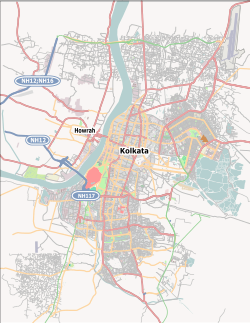সরকারি চারু ও কারুকলা মহাবিদ্যালয়, কলকাতা | |
 Seal of the Government College of Art & Craft | |
Other name | GCAC |
|---|---|
Motto in English | Art is the response of man's creative soul to the call of the real |
| Type | Public, Calcutta Art College |
| Established | 1854: School of Industrial Art 1864: Government School of Art 1951: Government College of Art & Craft |
| Founder | Abanindranath Tagore |
| Principal | Chatrapati Dutta |
| Address | 28 Jawaharlal Nehru Road , Kolkata , West Bengal , India 22°33′26″N88°21′00″E / 22.5571913°N 88.3500542°E |
| Affiliations | University of Calcutta |
| Website | www |

The Government College of Art & Craft (GCAC) in Kolkata is one of the oldest Art colleges in India. It was founded on 16 August 1854 at Garanhata, Chitpur, "with the purpose of establishing an institution for teaching the youth of all classes, industrial art based on scientific methods." as the School of Industrial Art. The institute was later renamed as the Government School of Art and in 1951 it became the Government College of Art & Craft. [1]

